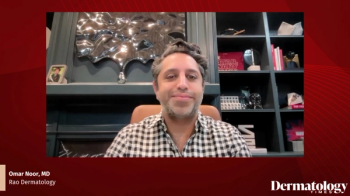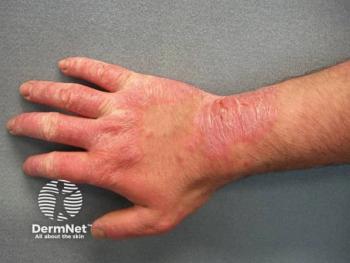
- Dermatology Times, May 2025 (Vol. 46. No. 05)
- Volume 46
- Issue 05
Collaborating for Better Aesthetics: Why Dermatology Matters in Multispecialty Medicine
Key Takeaways
- Cross-specialty collaboration in dermatology and aesthetic medicine enhances patient care and outcomes, as emphasized by Dr. S. Randolph Waldman.
- The Multispecialty Aesthetic Conference promotes interdisciplinary learning among dermatologists, plastic surgeons, and aesthetic medicine clinicians.
Explore the evolving landscape of dermatology as experts emphasize the importance of cross-specialty collaboration and patient-centered care in aesthetic medicine.
In a world where medicine continues to evolve rapidly across specialties, one thing remains constant: patients are more informed, curious, and discerning than ever before. In dermatology, arguably one of the most visual and patient-facing specialties, this creates opportunity and challenge. For S. Randolph Waldman, MD, a board-certified facial plastic surgeon, founder of the
The 3rd Multispecialty Aesthetic Conference, held March 27 to 30, 2025, in Hilton Head Island, South Carolina, again embodied Waldman’s vision: to provide a platform where dermatologists, plastic surgeons, facial plastic surgeons, oculoplastic surgeons, and aesthetic medicine clinicians learn with and from each other. Its core message resonates beyond the 4-day meeting: It is a call to all dermatologists, whether or not they practice aesthetic medicine, to recognize the shared landscape they occupy with their colleagues in surgery, technology, and innovation.
“Each specialty brings something unique to the table,” Waldman told Dermatology Times. “It’s to our patients’ benefit that we all understand the advances, techniques, and preferences across the board.”
A Legacy of Integration
Waldman has been a pioneer in cross-specialty education since the early 1990s, when he launched the first iteration of a multispecialty aesthetic conference in Newport Beach, California. That meeting eventually evolved into the Vegas Cosmetic Surgery conference and later branched into 2 distinct but complementary events: the Global Aesthetics Conference, held annually in Miami Beach, Florida, and the Multispecialty Aesthetic Conference, held every other year in rotating locations.
This year’s Multispecialty Aesthetic Conference featured 2 distinct learning tracks: surgical and less invasive. There were also practice management and marketing sessions, a key area of focus in both of Waldman’s meetings, but the South Carolina conference emphasized interactive panels and audience engagement.
“It’s a niche meeting,” Waldman said. “But what makes it special is that attendees can have real conversations with experts across disciplines, in an environment that encourages that kind of exchange.”
A Call to Engagement
Waldman makes a compelling case for dermatologists who do not practice aesthetic medicine or who think it is not relevant to their clinical focus.
“You need to understand what’s out there, no matter what type of dermatology you’re practicing,” he said. “Patients come to you with questions, and even if you don’t offer certain procedures, being informed allows you to advise them knowledgeably, or refer appropriately.”
With more dermatologists joining group practices1 or collaborating with plastic surgeons,2 it becomes increasingly important to speak a shared clinical language, Waldman noted. Moreover, aesthetics is not just about procedures; Waldman says it is about outcomes, confidence, and quality of life.
Waldman also points to the interconnectivity of aesthetic advances with medical dermatology. Many energy devices initially used for wrinkle reduction are now finding applications in scar treatment, rosacea, and even inflammatory conditions.3 Similarly, injectables such as botulinum toxins are being explored in off-label uses for dermatoses affecting quality of life.4
“There’s more overlap than you think,” Waldman emphasized. “And that overlap will only grow.”
Looking Ahead to GAC 2025
The Global Aesthetics Conference, set for October 30 to November 2, 2025, in Miami Beach promises to further this vision on a larger scale. Now in its seventh iteration, the meeting has grown to become one of the largest independently run aesthetic meetings in the United States.
Global Aesthetics will feature 4 main content tracks: surgical, less invasive, practice management/marketing, and an open forum track designed to spotlight emerging speakers and new ideas.
“It’s an exciting time,” Waldman said. “We’re working on putting together a dynamic program with established leaders and new voices. But at its heart, the meeting remains true to its purpose: bringing people together from across specialties.”
The Bottom Line
Waldman said aesthetic knowledge is no longer optional for dermatologists today, particularly those facing shifting reimbursement models and increased patient demand. Even for clinicians focused purely on medical dermatology, patients’ expectations and innovations from adjacent specialties are shaping the future of clinical practice.
“Multispecialty collaboration is about shared knowledge, but it’s also about mutual respect,” Waldman said. “The more we understand each other’s perspectives, the better we serve our patients.”
References
- Novice T, Portney D, Eshaq M. Dermatology resident perspectives on practice ownership structures and private equity-backed group practices. Clin Dermatol. 2020;38(3):296-302. doi:10.1016/j.clindermatol.2020.02.008
- Venning VL, Moreno-Bonilla G, Stewart TJ, Lee S, Fernandez-Peñas P. Increased collaboration between Mohs and plastic surgeons in the surgical management of skin cancer in Australia. Australas J Dermatol. 2020;61(1):85-87. doi:10.1111/ajd.13112
- Gianfaldoni S, Tchernev G, Wollina U, et al. An overview of laser in dermatology: the past, the present and … the future (?). Open Access Maced J Med Sci. 2017;5(4):526-530. doi:10.3889/oamjms.2017.130
- Lewandowski M, Świerczewska Z, Barańska-Rybak W. Off-label use of botulinum toxin in dermatology-current state of the art. Molecules. 2022;27(10):3143. doi:10.3390/ molecules27103143
Articles in this issue
Newsletter
Like what you’re reading? Subscribe to Dermatology Times for weekly updates on therapies, innovations, and real-world practice tips.



















